Photographs: Rupak De Chowdhuri/Reuters Arup Das
A huge question mark looms over the future of India's oldest car, Hindustan Motors' Ambassador.
Work at the factory in Uttarpara in Hooghly, West Bengal, has been suspended, though the management says in time operations will begin again.
The car has been a symbol of an industrially striving post-Independence India, an icon long before the Maruti 800 rolled out to capture the roadspace.
Though the Ambassador has lived through 57 momentous years, it has retained the looks of its youth.
…
The last ride: Why the nation still loves Ambassador
Photographs: Ask27/Wikimedia Commons
A white Ambassador was once a sign of political power, a black-and-yellow one still remains a reality of urban city living, as the backbone of the taxi business in India.
And to get an insight into the cabbie's experience, I talked an affable fellow in New Delhi into giving me his yellow top CNG-powered Ambassador for a test ride.
With the temperature hitting 43.5 degrees, I only prayed that the air conditioner in the 11-year-old car was effective.
…
The last ride: Why the nation still loves Ambassador
Image: A private Ambassador car.Photographs: Nicolas Mirguet/Creative Commons
I needn't have worried. Of course, I was in the driver's seat with all the AC vents pointed towards me, but, within minutes the entire cabin cooled down.
And when you talk of the Ambassador's cabin, you are talking of a stand-out attribute, because the car has enviable interior space.
In the early versions, the Ambassador used to have a spongy, sofa-like bench in the front where three people could squeeze in.
…
The last ride: Why the nation still loves Ambassador
Photographs: Cheryl/Creative Commons
In time, the side gear system gave way to the 5-speed gear stick placed on the floor. That required changes in the seat configuration, so now the bench is optional, while two spacious independent seats are standard.
These provide excellent back and thigh support and are relaxing even during long drives, as is the one at the back.
It does take some time getting used to the camel-coloured interiors, which I guess screams 'premium' to Hindustan Motors, but I think the jury is still out on that.
…
The last ride: Why the nation still loves Ambassador
Photographs: Jeremy Marshall/Creative Commons
Personally, I would have preferred a black-and-chrome finish, but that would only jack up its cost. Still, the black-chrome combo is an affordable upgrade.
The design of the dashboard is straight from the 1980s and looks extremely tacky.
Mind you, the Ambassador, at least inside, has all the basic modern features that every other car boasts - power windows, 12V charging socket, optional arm rest on the rear bench, power steering and an MP3 music system.
There are, however, slight inconveniences like the power window switches on the centre console and AC controls behind the steering, below the speed dials cluster.
…
The last ride: Why the nation still loves Ambassador
Photographs: Gregory Williams/Creative Commons
The rattle and hum of the 1.8-litre engine can be felt and heard in the cabin, but it isn't too annoying.
Being CNG-fired and with a modest 54bhp churning in its cast iron heart, the car is more practical than spectacular.
It may not be a hot rod, but I realise it isn't lethargic either, easily managing to keep pace with the modern cars on the road.
…
The last ride: Why the nation still loves Ambassador
Photographs: Rich42uk/Wikimedia Commons
The 5-speed gearbox makes the Ambassador easy to drive as the gear ratios are suited for city driving.
With experience comes knowledge, and I find that to avoid hearing the engine whine, it is best to cruise within the 3000-4000 rpm range.
The ride quality can get a bit springy, but not nauseating. The Ambassador is an old-school vehicle that believes all roads are straight, so ease on the gas pedal when it comes to taking turns.
The car is ideal for Indian conditions and its stolid build keeps it stable even at a speed of 120 kmph.
…
The last ride: Why the nation still loves Ambassador
Photographs: Tatiraju.rishabh/Wikimedia Commons
And while the Japanese and the Koreans were raving about the marvels of power steering, it wasn't as if our old-world Ambassador wasn't averse to new technology.
Only, of course, power steering is an optional feature for discerning buyers, not for cabbie-owned vehicles like the one I was driving.
Those who prefer could also pay extra for features like a sun-roof. Which is to say, this car was truly a luxury of its times, only that Hindustan Motors somehow stopped evolving when competition conquered the market.
…
The last ride: Why the nation still loves Ambassador
Image: Sumitra Sarkar, 35, cleans a yellow ambassador taxi at a parking area along a roadside in Kolkata.Photographs: Rupak De Chowdhuri/Reuters
The company also dragged its feet when it came to the strict BS-IV emission norms, and it took a couple of years before Ambassador cars met the legislated emission standards.
During this period, Hindustan Motors could not sell the Ambassador in most Tier-I cities, leading the sales figures to plummet downwards.
If old-world charm attracts and you want to believe you are the raja of the roads, then of course the Ambassador is just for you.
…
The last ride: Why the nation still loves Ambassador
Image: Official Hindustan Ambassador cars waiting in line outside North Block.Photographs: Christian Haugen/Wikimedia Commons
It is an emotional choice, not a practical one as the car feels old and the recent changes are only cosmetic in nature. No doubt, the car scores high on comfort and space.
The power steering has also made the car a lot easier to drive, but the ride quality is fairly average. I wouldn't even broach the subject of how the car handles.
…
The last ride: Why the nation still loves Ambassador
Image: A mechanic repairs a yellow ambassador taxi at a workshop in Kolkata.Photographs: Rupak De Chowdhuri/Reuters
Plus, I feel the interiors need a total revamp, even if the retro look is to be retained. Of course, the good news is that the Ambassador allows you to customise it to your heart's content and that is what we would recommend because living with it does not cost you much.
It is also low maintenance, and reliable - it won't get you stranded as it can be fixed at any roadside garage anywhere in the country. But yes, tune the engine regularly. And if you must, buy the car now. You would then have history in your garage.
I wouldn't even broach the subject of how the car handles.
HM Ambassador 1.8 CNG
Engine: 1817 cc
Torque: 102 Nm @ 3000 rpm
Power: 54 bhp @ 4600 rpm
Gearbox: 6-speed
Price: Rs 5-6 lakh (Approx, ex-showroom, NCR)
…
The last ride: Why the nation still loves Ambassador
Image: Rows of Ambassador cars are seen at the Hindustan Motors plant in Hindmotors.Photographs: Jayanta Shaw/Reuters
Eventful Ride
1948: Uttarpara plant - the birthplace of the Ambassador - is set up in the Hooghly district of West Bengal. Initially it is an assembly plant for the Hindustan Landmaster model based on Britain's Morris Oxford Series II.
1956: The Morris Oxford III model - the inspiration for the Ambassador car - is first made by the Morris Motors Limited at Cowley, Oxford, in United Kingdom
1957: Ambassador, the oldest face of India's automobile industry, is born at the Uttarpara plant. The first Ambassador, dubbed Mark 1, owes its look and styling, which has hardly changed since its inception, to the Morris Oxford III.
1959: The side-valve engine of the car is improved to an overhead-valve engine.
1963: The Ambassador goes through a minor facelift, and then tagged as the Ambassador Mark II. The company gifts the first model to Prime Minister Jawaharlal Nehru.
1975: It gets minor changes with new tail lights, number plate light, rounded parking light and new dashboard. It is named Ambassador Mark III.
1979: Ambassador Mark IV is launched with a smaller chequered grill. Diesel version is also launched for the first time.
1980s: The Ambassador's popularity peaks with annual sales of over 24,000 units.
1983: The Maruti 800 is launched and soon becomes India's most successful car.
1995: Multinationals enter Indian automobile markets. About 18,000 Ambassadors are sold annually at this time.
1999: The Ambassador Nova is launched with some cosmetic changes, like a new-look steering wheel and a new radiator grille.
2003: The car for government officials for decades, the Ambassador is overlooked by Prime Minister Atal Bihari Vajpayee who opts for the BMW Series-7 for his entourage. The government had been a big buyer of the car and this sets a trend for departments to look at other models.
2013: Sales of the Ambassador slide to just about 3,000 units a year. The current model is launched to match BS IV emission standards mandatory for the metros.
May 25, 2014: All work at the Uttarpara plant is suspended. Production of the Ambassador is stalled.
(Compiled by Probal Basak)

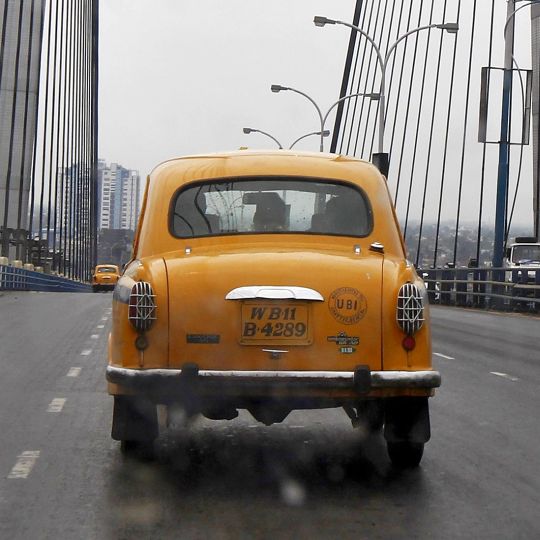
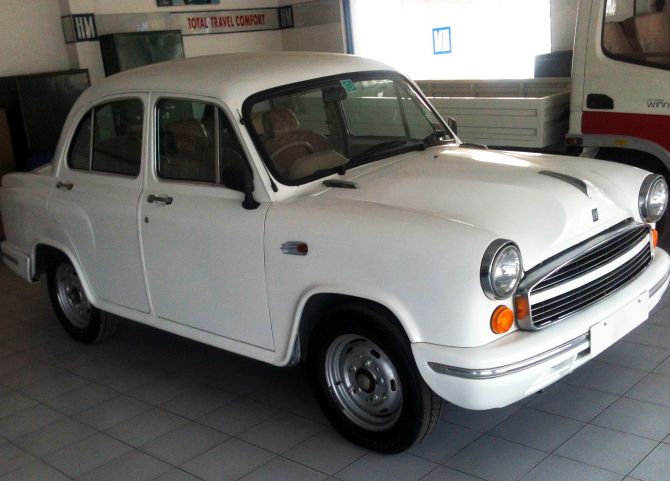





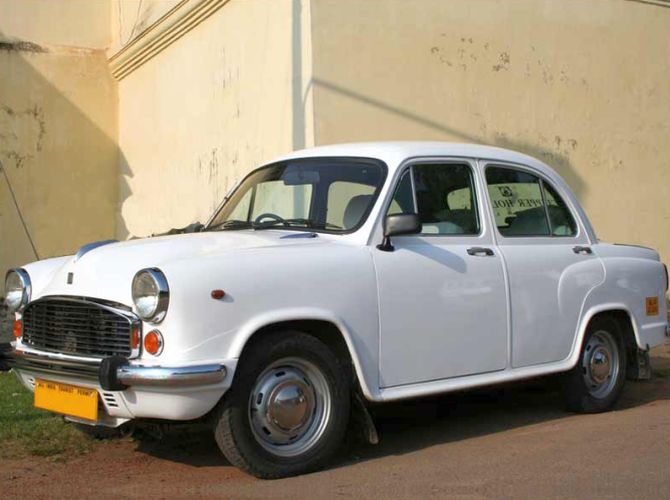
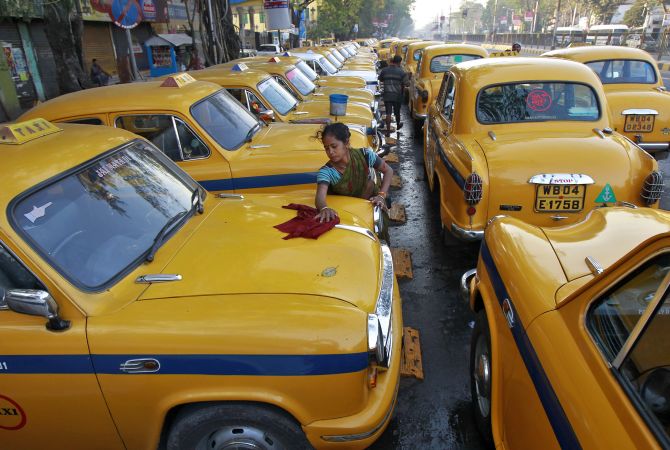
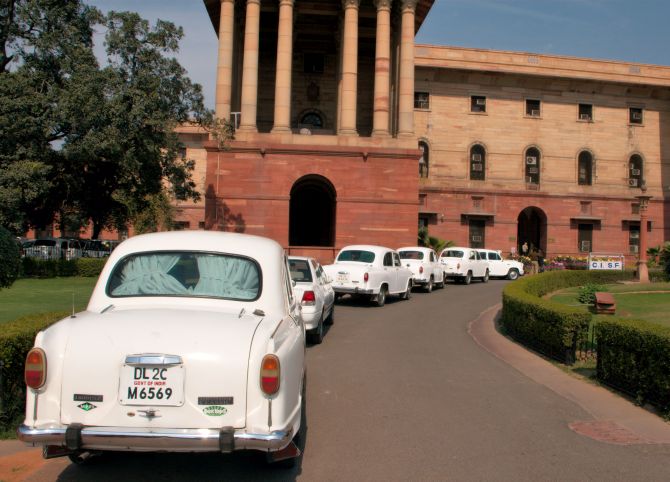

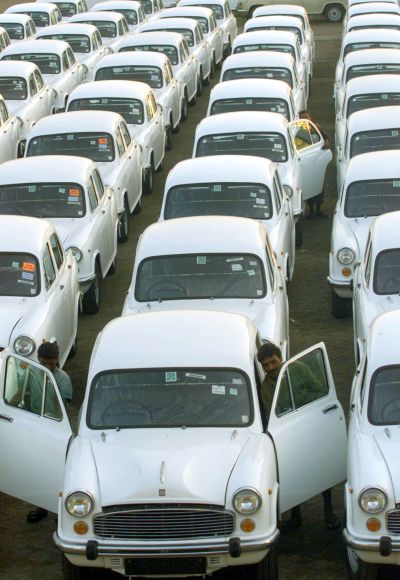

article